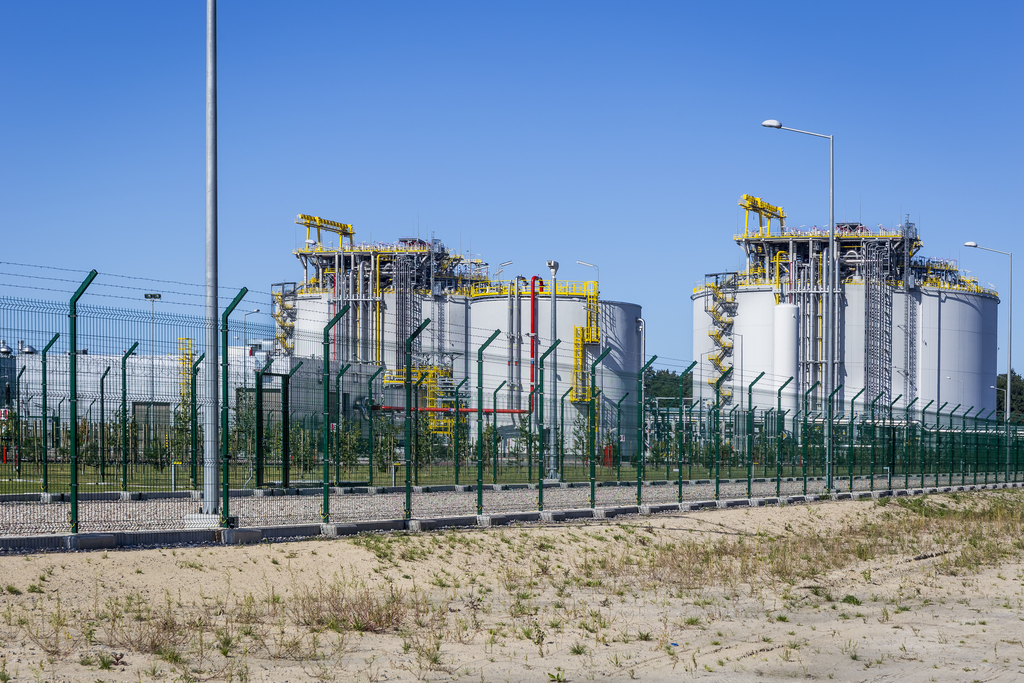
Brian Sims
Editor

Brian Sims
Editor
Perimeter intrusion detection systems are all about detecting the presence of intruders attempting to breach the physical perimeter of a property, building or other secured area. What are the key points to note, though, when it comes to their specification? Mark Horton provides some Best Practice guidelines for today’s practising security professionals
2020 HAS been an unusual year. The impact of COVID-19 is being felt around the world, with everyone adapting to what’s now commonly called the ‘new normal’. Individuals, families, companies, organisations and even countries are having to change the way in which they operate, how they interact and how they travel.
The impact on businesses has been massive. Home working has become standard practice for many. Some sectors have been devastated. Very few have been left unaffected. The future remains uncertain and this has had an impact on the global financial markets. Companies are tightening their belts in readiness of the predicted recession. One thing’s for sure – it’s certainly not the easiest time to be doing business.
From a security perspective, there has also been changes to the way in which assets are monitored. Sites that were once busy are now empty and unmanned. Lockdowns and travel restrictions have put further pressure on security teams and operators. Let’s not forget, either, that crime rates also tend to increase as a result of economic uncertainties and increased unemployment.
How, then, will – and should – security managers and asset owners alike react? Some key decisions will need to be made upfront. When it comes to costs, how might value for money be derived? Is it possible to reduce the whole life cost of deploying risk mitigation (including maintenance) over a given system’s lifetime? In terms of personnel, the issue of planning for further lockdowns and the risk of staff shortages need to be addressed. On decision-making, how might operator information be improved in real-time to enable them to quickly assess a threat and affect an appropriate response?
On the money
For an electronic security solution, costs can fall into one of three categories: the upfront technical costs, implementation costs including any civils and power requirements, etc and, finally, ongoing maintenance costs. Future security investment will most likely come under even closer scrutiny as company financial directors or CFOs look to reduce costs from each element.
The cost-effectiveness of the solution over its complete lifecycle will be taken into consideration. What’s the upgrade cycle? What does the product lifespan look like? What will be the cost of annual maintenance commitments? Are there solutions available with a low infrastructure cost and are there low or even no maintenance solutions out there?
Manufacturers and installers creating valued engineering solutions that don’t impact risk mitigation will be the companies that win the business over the next 12 to 36 months. Long product lifespans, low installation costs and minimal maintenance without compromising detection capability will be the security procurement motto in the short-to-medium terms.
2020 has exposed a key flaw in any risk mitigation plan that’s heavily reliant on people. Even with security officers classified as essential workers and exempt from lockdown, reduced transportation has made it challenging for them to reach certain sites, which in turn has meant that security managers have had to prioritise those areas to be protected by a physical presence.
It’s important the industry learns from this and ensures that any risk mitigation plan allows for the possibility of further disruption to travel. Security technology wasn’t impacted by social distancing, isolation or travel disruption. In fact, such infrastructure has continued its normal operation, with the only impact being perhaps fewer operators in designated Control Rooms to monitor said equipment.
It’s easier to manage and prioritise security in a controlled environment, but what about outside? What about external areas or sites with long perimeters? How do you manage these areas with a potentially reduced security guarding regime in place? In cases like this, it’s important that security technology becomes the eyes and ears of your security operation.
External intrusion detection
What are the main drivers of a fit-for-purpose technology security plan and do these drivers change during a pandemic crisis? Let’s take a detailed look at external intrusion detection as one key example.
The need for real-time and accurate data from a potential security event is always key to affecting an appropriate response. This can be split into four aspects: reliability, integration, the probability of detection and, last but by no means least, location accuracy.
When focusing on reliability, it’s true to state that operator confidence is earned on the back of a reliable intrusion detection solution that exhibits low-to-zero false alarms on a continual basis. This is an area where there have been major leaps in security technology as the market has demanded dependability in terms of alarm events. Advanced signal processing, complex algorithms and ‘double knock’ technology have all contributed towards increased reliability.
The integration of intrusion detection with CCTV cameras also has a major impact on operator confidence. The ability for an integrated solution to automatically display the relevant camera feed without operator interaction affords an additional layer of reassurance. It also ensures that the event is digitally recorded and can provide evidence for law enforcement.
Equally important is the probability of detection. Operators must be sure that their intrusion detection system is going to detect would-be intruders. Achieving 95%-plus probability of detection means that no additional security guarding patrols are needed. In parallel, any doubt is also removed from operators’ minds.
Location accuracy has a direct correlation to a prompt response from security teams. This is especially true for external perimeter detection where there may be perimeters of 5 km, 10 km or even longer to patrol and respond to in the event of a security incident. The ability to pinpoint an intruder with an accuracy of just a few metres ensures that practising security teams arrive promptly and can then prevent a defined threat from escalating.
Priority processing
A security solution that can process alarm events according to priority also ensures that key assets are always protected. By revisiting these aspects, asset managers can ensure that they have a detailed plan in place that remains resilient should personnel levels be reduced, thereby ensuring maximum site coverage with the minimum of personnel.
Business continuity plans must now consider more intently the potential disruption to the availability of manpower. As a result, security technology that mitigates this risk should be given greater consideration.
This shift in focus can be illustrated by one of our own recent projects. With the telecoms sector being a key vertical for us, we’ve already delivered bespoke solutions for a number of Data Centres around the world. The latest of these came with a set of specific demands around protection measures.
Due to COVID-19, the client had reduced staffing levels to the extent that the Data Centre facility itself was operating almost on an autonomous basis. With high value and highly targeted assets, any outage caused by theft would have serious financial and reputational implications. That being so, the end user required a perimeter intrusion detection system that would provide real-time and, importantly, accurate threat alerts with a focus on the whole-life costs.
The site is located in a busy location with a high traffic roadway running alongside it. Above all else, the client wanted to ensure that the security team on site wasn’t going to be troubled by numerous false alarms.
The range of perimeter intrusion detection systems installed uses fibre optic cable as the sensor. This cable has a typical lifespan of 30-plus years and is maintenance-free. It’s attached directly to the fabric of the fence and walls at the site so there was minimal requirement for any civils or infrastructure costs. This method of installation is very quick and means that the system is up-and-running and detecting threats in a fraction of the time of alternative solutions. Further, any other technologies that might have been deployed would still have required trenches to be dug and power cables to be laid.
Location accuracy
Fibre optic sensing also provides exemplary location accuracy, identifying the point of intrusion to a few metres. This solution ensures a high probability of detection with few nuisance alarms, giving high confidence to the operators and reducing the need for regular patrols. When comparing technologies, the client quickly identified a substantial whole-life cost saving over a ten-year period by deploying a fibre optic-based perimeter intrusion detection system.
The system was fully integrated into a comprehensive CCTV system and, on alarm, a graphical user interface clearly highlights the exact location of any security event together with the relevant camera images. This all occurs automatically without end user intervention. All security events can also be viewed remotely by the outsourced security team members who are then able to respond promptly.
This is just one example of how fibre optic perimeter intrusion detection systems are deployed worldwide to mitigate threats to perimeters, while at the same time actively reducing the potential disruption caused by personnel shortages and travel restrictions.
Ultimately, the specification and selection of any perimeter intrusion detection system depends upon a number of factors relating to the operational requirement and local circumstances: the landscape and topographical features, climatic conditions, local regulations, the local environment and current/planned infrastructure, whether or not there’s a physical barrier and what it consists of, the duration of the required deployment and, as stated, integration with other types of equipment or systems, response force arrangements and the personnel on site.
In an uncertain world where we now face ever-evolving threats, developing a robust, reliable and more self-sufficient security infrastructure has to become the highest of priorities for our industry. We cannot predict the future, of course, but we can most certainly take steps towards better managing the risks to protect businesses, their assets and, most important of all, their people.
Mark Horton is Vice-President of Bandweaver (www.bandweaver.com)



Unit 22 Clasford Farm Stables
Aldershot Rd
Wood Street Village
Guildford
GU3 3HQ
UNITED KINGDOM
020 3287 4416